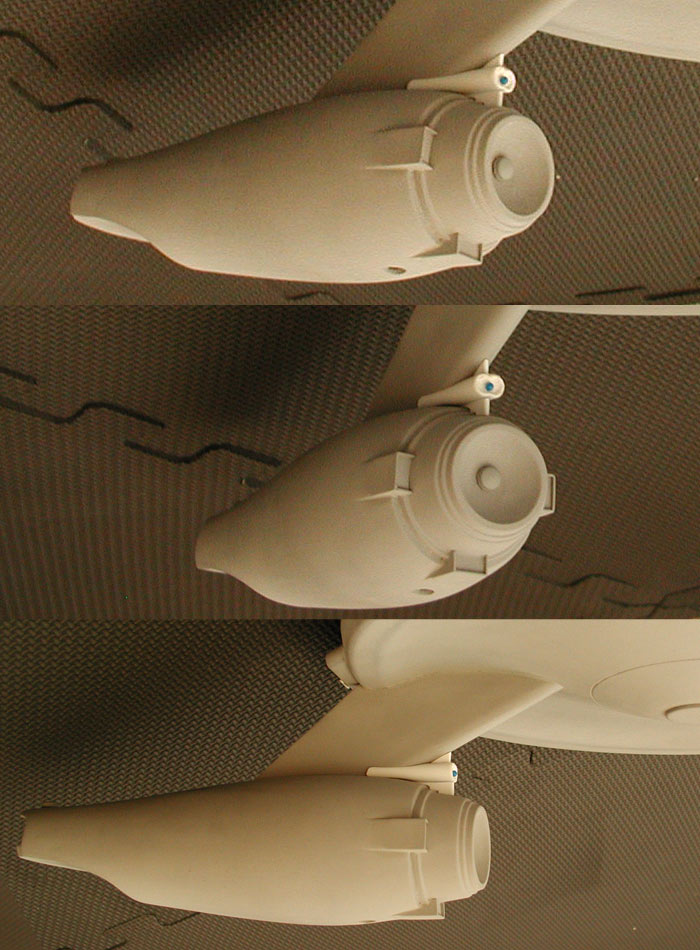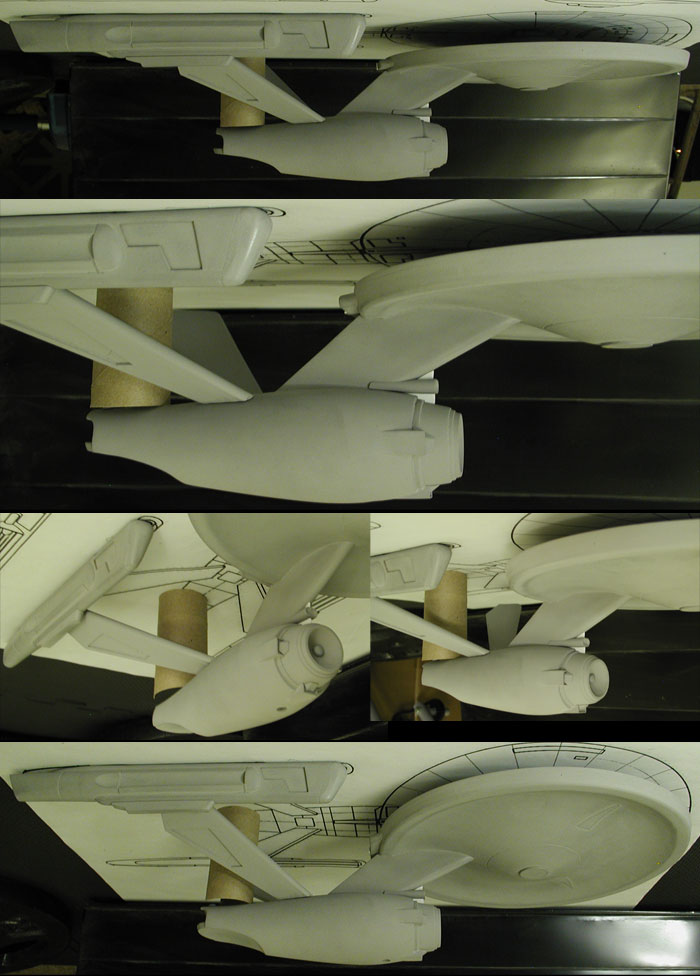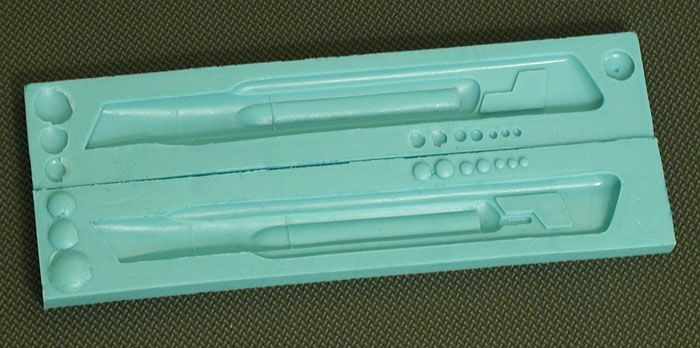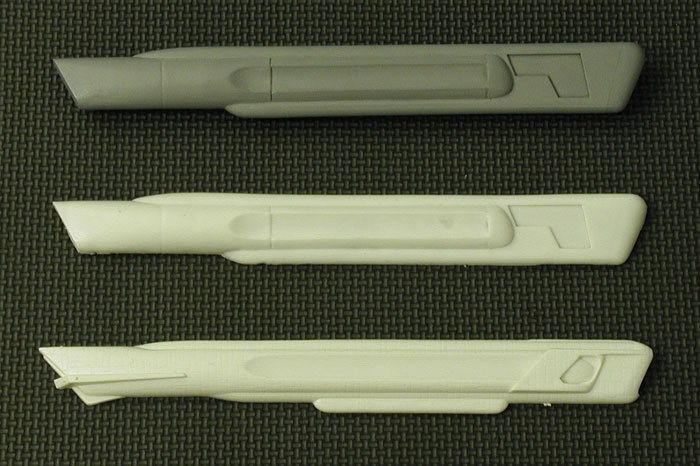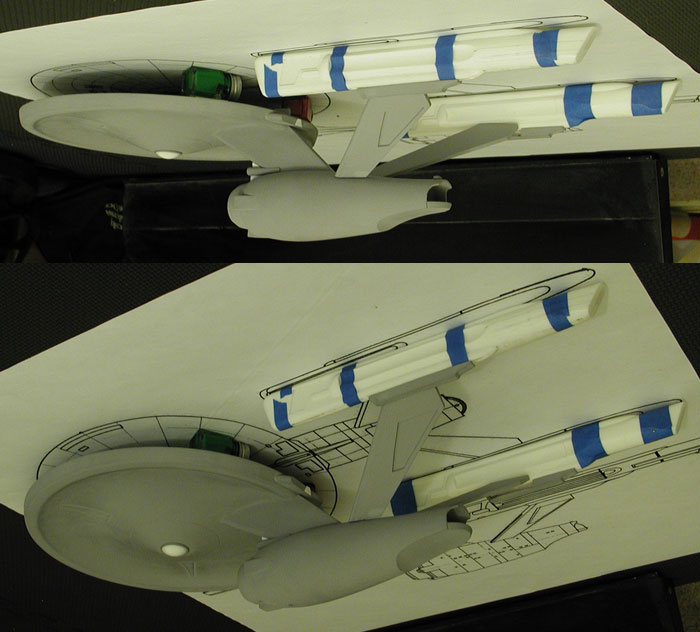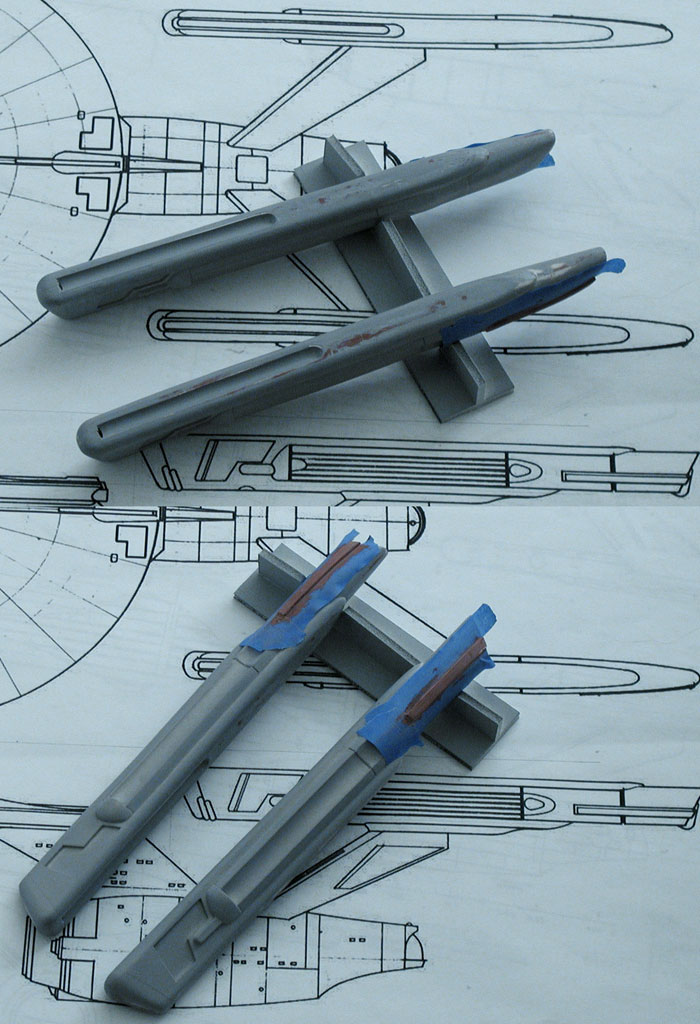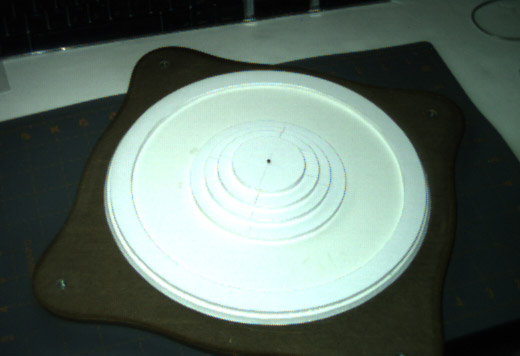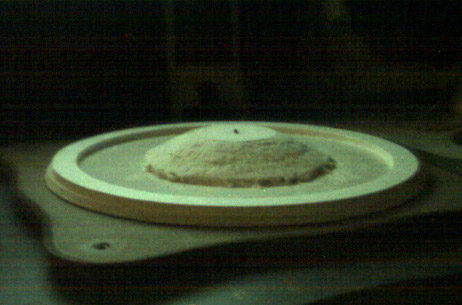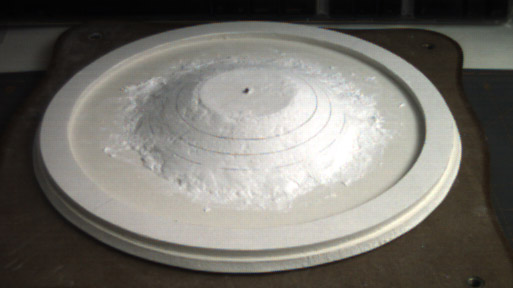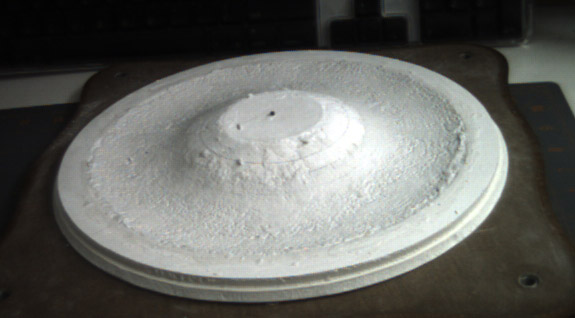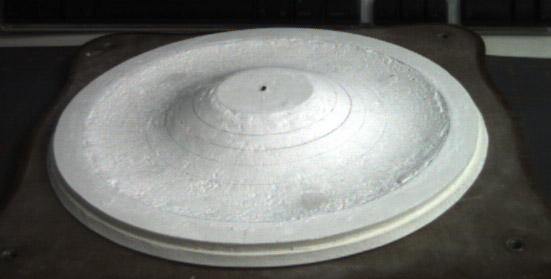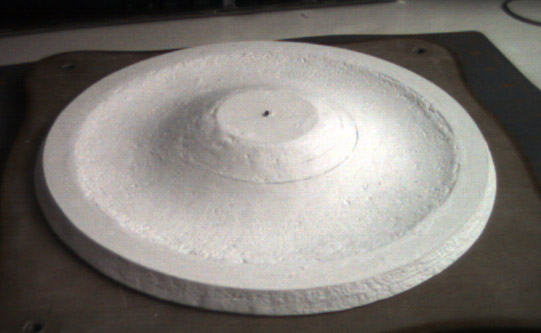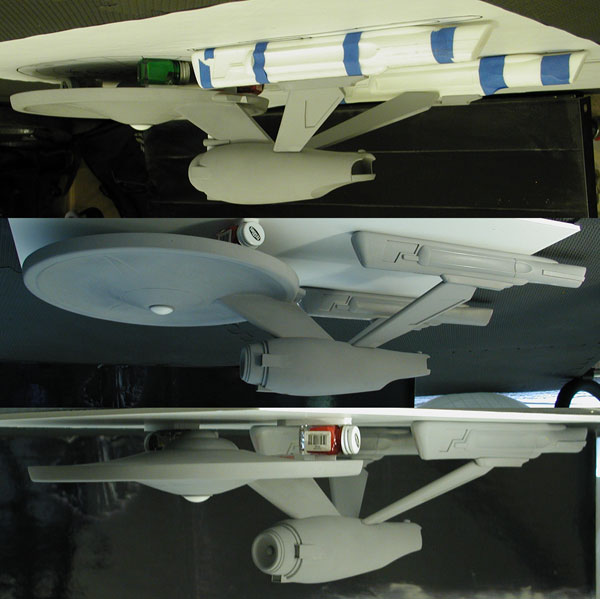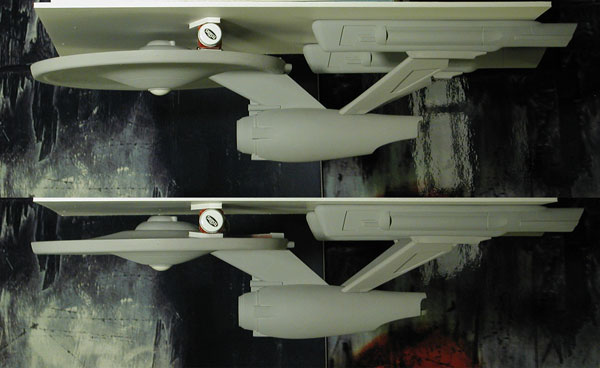I take it the 3M and AMACO supplies can be found at any hobby store, correct?
I think so, though I bought the 3M putty at a Sherwin-Williams Paint Store across the street from my local hobby store.
As for the small update, the model's looking awesome! With it as it is right now, looks very much like the original filming model in pics we've all seen.
Thanks! I'm entering one of the harder phases of the building process for me to get through. I tend to really like how my models look as straight sculptures in their primer gray and have a hard time taking the next step towards painting, applying decals and detailing them.
Btw, how are the decals looking?
I just have to complete a couple elements that represent surface features I don't want to build/paint directly on the model, but the rest of the decal sheet is essentially finished. The final plans will illustrate where each of the elements on that sheet will end up.
Because this is Jefferies "idealized" version, I'm using a re-creation of the original TOS decal sheet because that was what was on the 33 inch TOS Enterprise that Jefferies had available (the decals on that model were a one-quarter scale printing of the decals used on the 11 foot model). This ends up being one of those "killing two birds with one stone" endeavors as I now have the start of the decals I need for my final build of the 33 inch TOS Enterprise.
I imagine a lot of those would've been conjecture on your part, since we never saw any applied to the original model.
Well, part of the reason I put this project off back in 2007 was that I found that I didn't have enough information to complete the plans without injecting too much speculation into them. And for me, I really don't want to put anything from me into a project documenting someone else's work. So until such time as I had access to more information, I'd leave it at just cleaning up the copy artifacts and separating out the symmetry elements.
I had thought about contacting some people and putting more effort into researching this, but I had other things I was working on that I figured I'd get done first. Then in the summer of 2012 I was contacted by someone with a lot of information on the design of the Phase II Enterprise and the construction of the studio model. After a few phone discussions, I decided that there was enough information available to do the design justice in a set of plans.
What I ended up figuring out was that while the studio model was really close to the designs drawn up by Jefferies, there were some significant differences. So what was originally going to be one set of plans has now become two, with me addressing the Jefferies design first (which is why the dorsal and nacelle supports on this model differ from the studio model).
But yeah, the decals for the model were finished, the color of the model was picked out and ready… both of which were taken from their primary reference, the 33 inch TOS studio model which resided in Roddenberry's office at that point. Jefferies omitted things that would be essentially unchanged from that model on the Phase II design, and concentrated on the elements that would be different (after all, he was working on this in his spare time).
But things like the asymmetry of those elements on the nacelles were there on purpose, and the model was always going to be filmed from all sides. And even though the builds of the studio model missed some of Jefferies design elements, they did pick up on that and it was reflected in the molds for the final nacelles (which still exist today). I can understand why people think it would be symmetric, I thought it was supposed to be symmetric originally. But now I know that it was part of the design.
The biggest hold up is how much of my research I can share. I could just publish the drawings without any additional background information, but I really want to include as much of the background story as possible. But part of the agreement for access to this information was to keep some things off the record for now.
So yes, this model will be essentially (to the best of my abilities) how the Phase II Enterprise was supposed to have looked based on Jefferies designs… minus the lighting elements. The plans will outline how the model was supposed to have been lit.
Honestly, half the time I'm wanting to say so much more about this because there is a lot of cool stuff (both technical details and history of the artists involved). And I know that my model isn't doing the design the true justice it deserves, but I hope that the plans will let someone with real talent in this area bring the design to life someday.
:unsure Ummmm... yeah, that is just a long way of saying that there isn't as much conjecture here as one might think.
